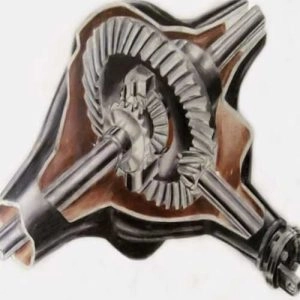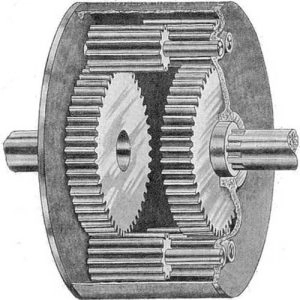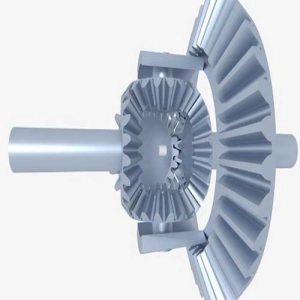The differential consists of a set of gears that control the rotation speed of the car's tires during turns. It assists in rotating the inner tire at a higher speed than the outer tire when making turns, which allows the car to move smoothly. Essentially, the differential divides the torque generated by the engine in a manner that results in all tires spinning at an appropriate speed. Generally, front-wheel drive cars have a front differential, unlike rear-wheel drive cars that have a rear one, while four-wheel-drive cars contain both a front and a rear differential.
Types of Differentials

Many people may wonder about the different types of differentials, and the differences between them. In general, there are four types of them, we will explain each of them in the following:
The open differential
This type is used in many economical cars, and is characterized by its ability to withstand changes that occur in tire speed, or skids.
The open differential allows the outer tires to rotate at a higher speed than the inner tires under appropriate road conditions. However, on slippery, rough roads, during sharp turns, or strong acceleration, this type may not function properly. The reason for this is that the engine's torque will be continuously transferred to the tires, causing them to rotate continuously regardless of the road conditions, whether dry or slippery.
Also read: The gear shift lever the most important indicators of its damage.
Locking Differential
It is recommended for use on desert roads, due to its mechanism that works to distribute equal amounts of power to all tires. This is achieved through its use of clutches and springs that activate the lock distributing the power evenly to the tires. The benefit of this mechanism is that it provides greater capability to propel the car, making it useful on rough and mountainous roads. However, it is not desirable when driving at high speeds.
Torque Differential
If you are looking for high performance and dynamic driving, you should consider a torque differential. This type is considered the best and most complex, thanks to its use of a set of sensors and electronic technologies that are used to electronically activate the clutches through the control unit. This type is used in modern cars and high-performance vehicles, such as four-wheel drive vehicles and some rear-wheel drive cars.
Limited Slip Differential
Its operation is similar to that of an open differential under good road conditions, as it transfers torque to all tires independently. However, it differs from the open differential when conditions worsen, for example, during severe turns, or during strong acceleration. This type prevents a small amount of torque from being transferred to the car's tires using internal clutches, which makes it a suitable option for use in sports cars.
Signs of Differential Damage

In this section, we will highlight the top 4 signs a driver may notice when the differential is damaged, which are:
Tire damage
As mentioned above, the differential contributes to making the inner tires spin at a higher speed than the outer tires when turning. However, if it gets damaged, the rotation speed of the outer tires will be equal to the inner tires, which could cause significant damage to the inner tires.
Difficulty in turning
Adjusting the tires during turns is a major function of the differential, hence, its damage will cause numerous and unexpected problems when the car turns, making driving dangerous and uncomfortable.
Hearing strange noises
Hearing strange noises while driving can be a sign of a problem with the car's differential, as its damage can lead to wear of the internal gears. This wear will cause the car to emit buzzing noises, which will increase in intensity as the speed increases. However, it's important to note that these sounds do not necessarily indicate a damaged differential, there could be other reasons, such as insufficient lubrication of the internal components.
Presence of vibrations
A damaged differential could be a major reason for vibrations in the car. This is because severe damage to the rear differential can cause the driveshaft to vibrate, and the vibrations will increase as the speed of the car increases.
When should the differential oil be changed?

Many people have asked this question, and the reason is the importance of differential oil in stimulating the differential, in addition to its importance in maintaining the gears. From this standpoint, everyone should not neglect it and change it when it is damaged. In general, it is recommended to change it after covering a distance not exceeding 120 thousand kilometers, or you can rely on the following signs indicating the necessity to change the oil. These signs are:
A burning smell emanating from the car's differential is a key indicator of differential oil damage. If neglected and not changed, the car's differential could be damaged.
The gears are making annoying noises. These sounds are produced by the wear and tear of the gears, as oil helps.The DifferentialTo protect and lubricate the gears, if this oil is damaged, the gears will be exposed to wear and tear.

Comments